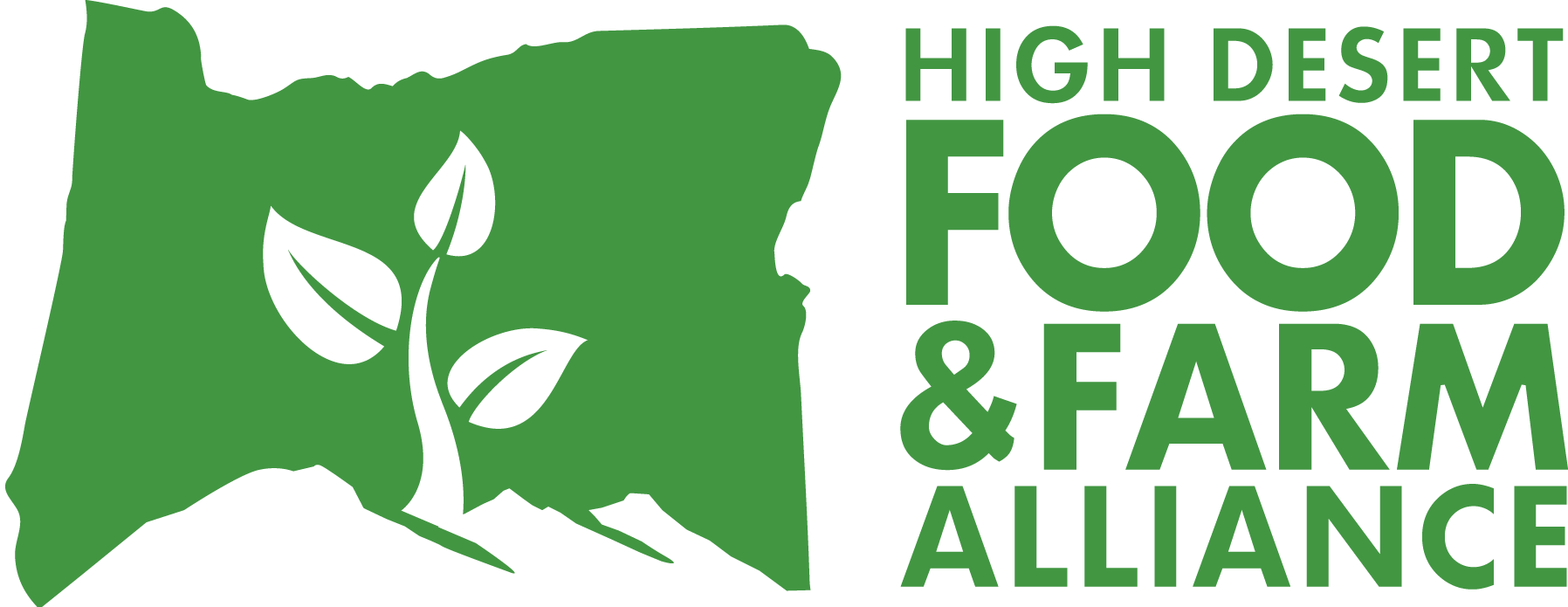This is the 2nd blog post in a series about food preservation by HDFFA guest blogger, Mary Lowe. Mary has been a certified Master Food Preserver volunteer with Oregon State University Extension for 10 years and will be sharing up-to-date, research-based information and tips for safe food preservation at home. Happy preserving!
Food Preservation: Step 1
by Mary Lowe
I was going to title this post “Trust the Science” but, we’ve had a whole year of hearing that phrase and it just brings back a lot of dismal and conflicted feelings (that we’re probably still having). So, I decided to approach this difficult subject with you very carefully and kind of sideways. Maybe you won’t notice that I’m getting serious and you’ll read on to the end.

Fresh Jalapeños
So, the new title for this post is Food Preservation: Step 1. Step 1 being, Trust the Science. Full disclosure, I am not a scientist. I am a consumer, a bit of a foody and I love to can, freeze and dry many type of foods. I get excited when I find a new recipe to try. In October I made pickled jalapeño peppers. They are delicious! In January I pulled a package of cranberries out of the freezer and made glacéed cranberries.* Again, delicious! Preserving foods can be so exciting and taste delicious and your products make great gifts to share with friends and family.
But, let’s get serious.
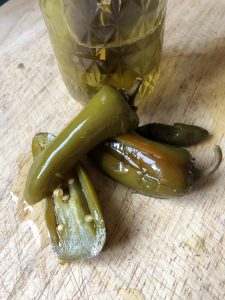
Pickled jalapeños
There are many foodborne illnesses. You are probably familiar with some. Get more information about those illnesses from the CDC. It’s possible that, if you aren’t careful, instead of enjoying the foods you make, you or someone you love could, at the least, become very sick.
Thankfully for us, science has given us simple methods that can reduce the risk of foodborne illness. Our job, as consumers and food preservers, is to get informed, inform others and follow the best practices.
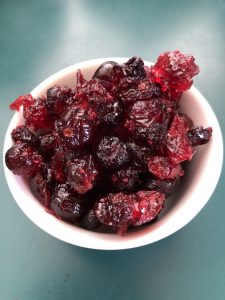
Glaceed Cranberries
Use the Best Recipes
The best recipes are up-to-date, scientifically tested and from a reliable source. That’s a mouthful. Let’s break it down.
Up-to-date
Did you know that handwashing as a method to kill germs has been used for less than two hundred years? Antibiotics have been used to treat infections for less than one hundred years. More recently, a vaccine to prevent COVID-19 was developed in the last year. These examples tell us that scientific knowledge changes and grows in its scope constantly.
Was your favorite recipe for pickles handed down to you from your mother who got it from her mother who got it from her mother? That recipe might be 50 to 100 years old. It might be perfectly fine. On the other hand, it might not tell you everything you need to know. For instance, if that recipe calls for vinegar, use only vinegar with 5% acidity. Before the acidity of vinegar was regulated acidity levels varied greatly. Also, check to make sure the recipe mentions adjusting the processing time for the altitude of the area you live in. There may be additional or different
things wrong with that recipe. So, for safety and to follow best practices, compare that favorite recipe to a similar, more recent recipe from a trusted source.
Scientifically tested
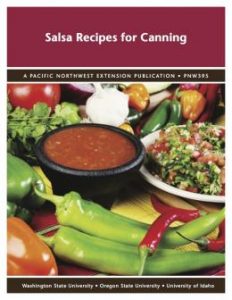
One of the many publications from OSU Extension
There are actual food scientists whose job it is to test ingredients, proportions and methods of preservation in a laboratory. Oregon State University is just one such laboratory. They test many kinds of foods and preservation techniques and recipes for both the home kitchen and commercial use. We benefit from their research when we consume delicious and nutritious preserved foods from the grocery store. We can also benefit from their research when we use recipes they have tested that are published in reliable resources online or in print.
Reliable Source
Food websites, blogs and publications are in abundance. Need a quick idea for dinner? Google it. Then choose the one with the prettiest picture. Right? I know I do it all the time with great, not so great or disastrous results. However, other than your pride, generally, no one was harmed.
A home-preserved food done incorrectly may have the worst of results. Not only could it not taste right, it could, at the very least, make someone ill.
To find a preserved food recipe that’s “up-to-date, scientifically tested and from a reliable resource” a place to start is https://beav.es/OSUFoodPreservation. These publications are free to view or download. Print copies are available at your local OSU Extension office by appointment. Another good source of information and recipes can be found here or purchase the most recent printed version of the Ball Blue Book of Canning
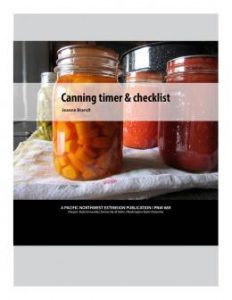 There are more trusted sources for food preservation but you need to be sure before you use them. Look for some clues such as publication date or a reference to “adjust for altitude.” When in doubt, explore this great Food Safety website, or try Ask an Expert.
There are more trusted sources for food preservation but you need to be sure before you use them. Look for some clues such as publication date or a reference to “adjust for altitude.” When in doubt, explore this great Food Safety website, or try Ask an Expert.
Congratulations, you made it to the end of this post. I have a reward for your perseverance. Try this fun and useful little app to help you on your canning adventures.
Here are some of the topics I’m thinking about for future food preservation blog posts: Beautiful and Shiny Equipment for Food Preservation, Loving the Canning Process, Prepare and Plan, Fermentation and Pickling. Let us know what else you might be interested in learning more about. See you next month. – Mary
*Glacéed Cranberries, How to Dry Food, Deanna DeLong
Mary can be reached through email at: mlaurisl@aol.com
